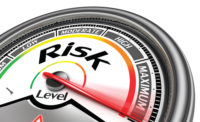Just imagine. Ten seconds of an unsanitary condition in the food industry could create a food-borne illness which could be devastating to a bar or restaurant business. In most restaurants, employee safety is rarely addressed although the cost of injuries continue to rise and worker's compensation costs are astronomical.
“Would you like to hear about a restaurant that did $10 million a year and didn’t have a professionally monitored first aid kit in house,” asked Allison Strauss, Strauss Training. “What about restaurants that don’t have crash boxes filled with candles, flashlights, calculators and current menu prices?”
Strauss has been appalled at what she’s seen in terms of a lack of safety awareness at many restaurants in the United States, but she’s also impressed with some of the steps restaurants are taking to improve conditions for both cusomters and employees.
Examples:
- Managers who proactively run through evacuation scenarios when bad weather begins.
- Refusing to serve guests on a patio in extreme heat or rain.
- Installation of canvas dormers next to a revolving door entrance to alleviate wind gusts blowing doors around and around.
- Use of metal mesh gloves when cutting bread
No restaurant or bar wants to be known for unsanitary conditions, improper handling, serving and storage of food, and lack of safety training including CPR and First Aid/AED. Did you know that many restaurants fail to run fire drills, and few if any are trained to respond to an emergency?
Part of the problem is that for many, the restaurant industry is a transitional stage in their lives. Servers, bartenders and cooks pay for school or wait for their big break in acting. Restaurant owners know this and so they may be reluctant to invest in training — especially safety training — when staff come and go frequently.
“The restaurant management at the top needs to take the position and believe that they will attract a better grade of employee and thus gain more customers once word gets out in their local community that they focus on training. A restaurant that trains offers real long term careers to their crew. Training certificates should belong to the employee and they can take them with them when they leave the employ of the restaurant to boost their resume and show their extra worth. Raises and upward mobility should require course credits before you can move up. This gets the restaurant crew to buy into the training program. Everyone must buy into the value of ongoing training. The quality of the crew equals the success of the restaurant more than the menu or recipes,” said Stu Leventhal, a Philadelphia restaurant consultant.
For those still not convinced, consider the typical restaurant manager. The age group for that job is about 22 to 35. How much safety training have they had? What would they do if someone had a heart attack in their restaurant? What is the cost of sending them to a CPR course, versus the negative media impact of a news story about someone dying in a restaurant?
Consider Carole Lombardi’s approach. Her restaurant is a part of the Hotel Monaco in Portland, Oregon. Her team includes a safety commitee with representatives from all departments which includes the restaurant. Her safety committee conducts monthly meetings to review emergency plans and safety concerns. Meeting minutes are distributed to the entire staff. They also conduct periodic fire drills for both the restaurant and the staff so that everyone is aware of emergency exits as well as a meeting spot outside of the hotel and restaurant. But is this enough?
"The most important part of delivering a great guest experience is making sure that the environment they are dining in is as safe as the food we put on the plate,” said Ken Botts, a sustainable food systems strategist.
Employee/customer safety must be a top priority for me. It’s not enough to just do monthly safety meetings. It must be an everyday practice, include employees are helping/showing newer employees the safety guidelines and it must start on day one.


